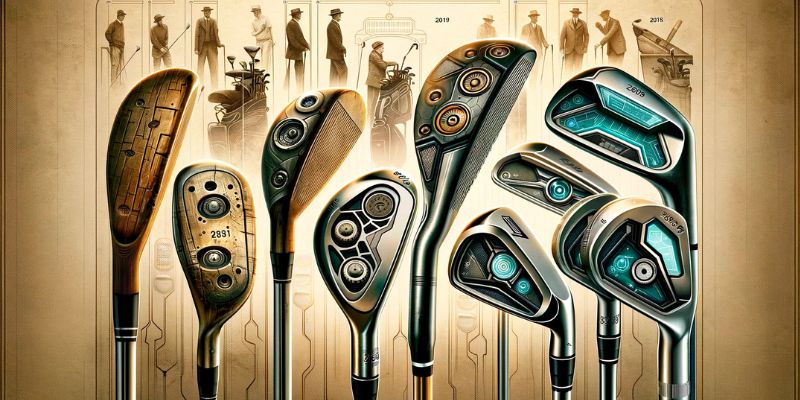The evolution of golf irons has transformed dramatically over the decades, influencing how the game is played at every level.
From forged blades to technologically advanced multi-material designs, golf irons have undergone significant changes, enhancing playability, forgiveness, and performance.
This article explores the journey of golf iron technology, from its rudimentary beginnings to the sophisticated equipment we see today.
Historical Developments
The development of golf irons can be traced back to the early days of golf in Scotland. Initially, golf clubs were primarily made of wood.
The introduction of iron heads was a game-changer, providing golfers with more durability and better control for shorter shots.
In the early 20th century, the evolution of golf irons saw the transition from hickory shafts to steel and iron shafts, drastically altering the dynamics of the club and the way the game was played.
- Forged Irons: Traditionally, irons were forged from a single piece of metal, which allowed for better feel but required greater skill to play.
- Cavity Back Irons: Introduced in the mid-20th century, cavity back irons offered golfers enhanced forgiveness, thanks to perimeter weighting which helps reduce the effect of off-center hits.
The shift from forged to cavity back irons marked a significant milestone in the evolution of golf irons, making the game more accessible to amateurs and reducing the skill gap between different player levels.
Modern Innovations
In recent decades, the evolution of golf irons has accelerated with the advent of modern technology.
Manufacturers now employ advanced materials and sophisticated manufacturing techniques to cater to the needs of all golfers.
- Multi-Material Heads: Modern irons often feature a combination of several materials, such as tungsten weighting, carbon steel bodies, and titanium inserts, to enhance performance.
- Technology-Enhanced Performance: Technologies such as face-flexing technology and speed pockets have been developed to maximize ball speed and distance, which are critical for modern play.
These technological advancements have not only improved the performance aspects of golf irons but have also made them more adaptable to individual playing styles and preferences, showcasing a significant evolution in their design and functionality.
Future Trends
The future of golf irons is poised to be as exciting as its past, with ongoing innovations that aim to revolutionize the game further.
Predictions for future trends include:
- Smart Irons: Just as with other smart technologies, golf irons could soon incorporate sensors to provide instant feedback on swing speed, impact angle, and ball trajectory.
- Sustainable Materials: With the increasing focus on environmental sustainability, future golf irons may utilize eco-friendly materials that reduce the sport’s carbon footprint without compromising on performance.
These forward-looking innovations will continue to make the game more inclusive, enjoyable, and environmentally conscious, ensuring that the evolution of golf irons aligns with the broader trends in sports technology.
The evolution of golf irons reflects the continuous quest for perfection in the sport.
As technology advances, so too does the potential for these essential tools to enhance playability and enjoyment, marking an exciting future for golf technology.
Whether you’re gifting golf clubs or upgrading your own golf bag, understanding this evolution is key to selecting the perfect set.
How have golf irons changed the game for amateur players?
The evolution of golf irons has made the game much more forgiving for amateur players, thanks to innovations like cavity back irons and multi-material designs that enhance forgiveness and distance.
What is the most significant innovation in golf irons in the last decade?
One of the most significant innovations has been the introduction of face-flexing technology, which allows the clubface to flex more upon impact, resulting in increased ball speed and greater distance.
How might golf irons evolve in the next ten years?
We can expect to see more integration of digital technology in golf irons, including embedded sensors and perhaps even AI-driven advice integrated directly into the clubs to enhance player performance and learning.

